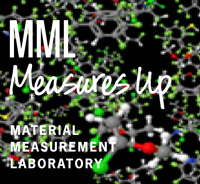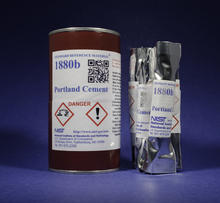
NIST helps to ensure the strength of buildings, bridges, roadways, and other critical structures all over the world.
The Material Measurement Lab at NIST makes certified reference materials that manufacturers use to check their processes for testing cement, the essential ingredient in concrete. Cement manufacturers, who know how vital it is for public safety and for the profitability of their businesses to make uniformly reliable cement, voluntarily comply with test methods developed and validated by the standards organization ASTM International, checking the chemistry of their products at many points in the production process. ASTM specifies that manufacturers and third-party test labs use NIST reference materials to check their test results and the skills of the chemists who perform those tests. When cement industry chemists test a NIST reference material and get values that are different from NIST’s, they know to look for problems with their test equipment or processes.
“NIST products are well-characterized, known materials that support a well-defined standard that everyone agrees upon.”
--Don Broton, Principal Scientist, CTLGroup

Independent test labs sometimes help to settle disputes between sellers and buyers about the quality of cement and concrete. The ASTM standards dictate how those tests should be conducted, and that NIST cement reference materials must be used to qualify the test methods and analyses.
Responding to the needs of industry, NIST recently developed reference materials for cement with slag, a byproduct of iron production, and fly ash, a byproduct of burning coal for power generation. Otherwise considered waste, slag and fly ash can improve many of the properties of cement so that it requires less water to mix, sets faster, flows more easily through pumps, and is stronger and less permeable. We also provide industry with a reference material for silica fume, a byproduct of making silicon and silicon alloys that increases the strength and abrasion resistance of concrete.
60 years of support to the cement industry
2,148 cement Standard Reference Materials® sold each year
$1 trillion worth of cement made each year around the world is quality-checked with the aid of NIST products

